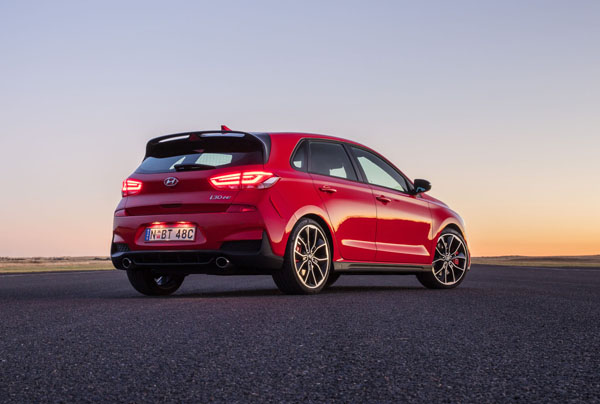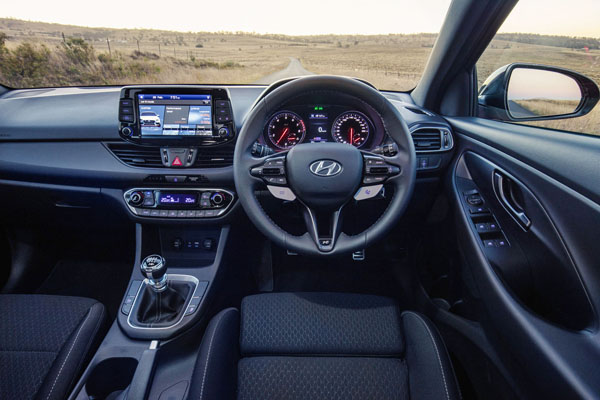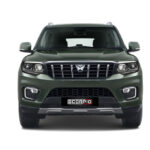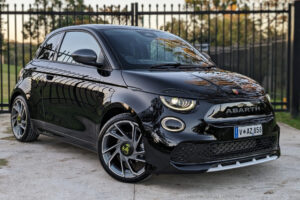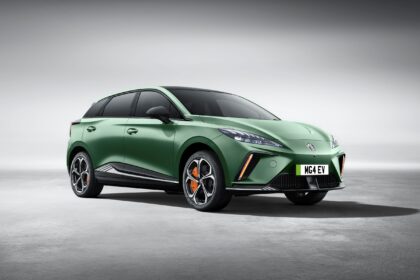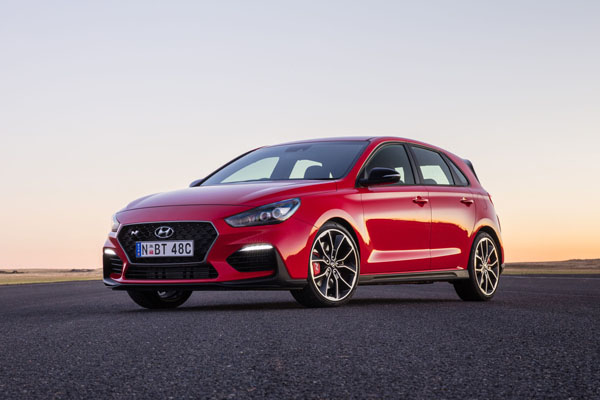
Hyundai continues to play Bach with the i30, the fugue-like (variations on a theme) composition of the small car range going on apace with the augmentation of the hot-hatch i30 N by the toned-down N-Line, while the rip-roaring Fastback N has just joined the band.
However, despite the late-comer distractions, it’s still the ‘old’ N that rules the roost. The first model from the Hyundai ‘N’ Performance Division was conceived at Hyundai Motor Company’s global R&D Centre in South Korea and honed on the ‘Green Hell’, Germany’s notorious Nurburgring circuit, as well as having its suspension tuned to suit Australian roads and hot weather. It is also track ready with no modification required.
The Hyundai i30 2.0 N sells for $39,990, $20k more than the entry-level i30 2.0 Go, but with what’s on offer who’s counting? For those wanting something special with their spice, there is an optional Luxury Pack for $3000, which includes sport front seats with suede inserts and leather bolsters, 12-way power with driver’s seat memory.
There’s seat heating, which extends to the steering wheel, a wireless phone charging pad and smart key with push-button start. The test car thoughtfully came with all this. A panoramic sunroof can top things off for an extra $2000.
STYLING
With focus on aerodynamics, seeking a balance between downforce, drag and cooling, the i30 N stands 8mm lower than the standard i30 and features larger wheel arches to take new 19-inch alloy wheels and low-profile sports tyres.
The ‘N’ logo is proudly present everywhere – engraved in each wheel rim, on the flash red brake calipers that clamp big ventilated brake rotors, as well as on the signature radiator grille and side skirts.
Black headlamp bezels give the front an aggressive look, while air inlets on either side of the bumper not only enhance brake cooling and aid aerodynamics but also form a focal point for the horizontal LED daytime running lights above.
Air curtains are mounted behind the grille adding to the car’s performance by enhancing airflow and reducing turbulence in the wheel housings, while increasing engine cooling.
The front splitter and rear spoiler create performance-boosting downforce and dual exhausts underscore the car’s sporty looks.
INTERIOR
Like the exterior, just so you don’t forget where you are, the letter ‘N’ is front and centre – at the base of the steering wheel, on the ball-shaped gearshift knob and on the backs of the seats. The steering wheel and gearshift boot also incorporate unique ‘N’ blue stitching.
The i30 N also features heavily bolstered, cloth-upholstered sports seats with suede inserts and leather bolsters on the optional Luxury pack.
The electronic instrument cluster is clearly set out with particular reference to what’s required for the driving enthusiast. The gear shift timing lights are on top and indicate when to change gear for optimal driving performance. The redline of the variable LED rev-counter varies with the engine’s oil temperature.
INFOTAINMENT
An 8-inch touchscreen displays standard factory satellite navigation and Apple CarPlay and Android Auto functions, while a wireless inductive charging pad for mobile phones (Qi standard) is part of the Luxury Pack.
In N Mode, the screen also shows information on power output, torque and turbo boost. It also has built in lap time, G-force and acceleration timer and customisable functions such as settings for the engine, suspension, steering, differential, transmission, Rev Matching, exhaust sound and stability control.
ENGINES / TRANSMISSIONS
The 2.0-litre turbocharged four-cylinder engine delivers 202 kW at 6000 rpm and 353 Nm between 1450 rpm and 4700 rpm. Overboost ups maximum torque to 378 Nm from 1750 rpm to 4200 rpm for up to 18 seconds.
Front wheels are driven through a six-speed manual transmission strengthened and fitted with carbon fibre synchromesh rings to reduce shift effort and make gear changes smoother and faster.
SAFETY
A Smart Sense safety package includes autonomous emergency braking, driver attention alert and lane keeping assist. Pedestrian recognition is not currently available for i30 N … perhaps it’s up to the pedestrians to look for cars.
DRIVING
It could be a driver’s life’s work to discover and experience the multiplicity of the Hyundai i30 N, such is the range of automotive technology on offer. It’s mind boggling, even more so considering the price of the vehicle.
In my case, the first thing to go was trackwork, not having easy access to anything approaching Nurburgring. I had to make do with the ‘Demi-Green Hell’ of the Gold Coast Hinterland. And what fun.
The unique ‘N’ steering wheel keeps the driver in touch with all performance functions – three standard drive modes: Normal, Sport and Eco, and a blue chequered flag N button for N-mode or N Custom.
Engine revs can be matched to gear changes by pushing the dedicated ‘REV’ button on the right steering wheel spoke above the N button. Enjoy the ‘blips’ of the throttle on downshifts.
Talking of sounds, an electronic sound generator, mounted in the bodywork at the base of the windscreen, gives occupants a high-performance experience of a sporty engine sound.
But it doesn’t end there. An active variable exhaust system enables the driver to choose different exhaust sounds of varying intensity from ‘normal’ to ‘impressively powerful’ to ‘hard-core’, with race track-inspired ‘crackle and pop’ in the ‘Sport+’ setting.
To top it all off the N Driving Mode system enables the driver to pick from Eco, Normal, Sport, N and N Custom, all activated using two dedicated steering wheel-mounted buttons, which adjusts the car’s damper, electronic stability control, electronic limited-slip diff, engine sound and response, plus steering and Rev Match parameters.
In N Custom mode, selections include Eco, Normal, Sport and Sport+ for each high-performance element to set the car up how the driver wants it to behave. Hyundai claims this allows for 1944 different settings. It’s almost all too much to take in at once, but by god, I gave it a good try.
On a more down-to-earth note, with everything that was going on fuel consumption was very much an afterthought, but from what I can remember hovered between 6.8 and 11 litres per 100 kilometres on a mix of urban and highway driving.
On the down side, noise from the Pirelli P-Zero HN tyres, I was told by the car’s keeper, was down to wear and tear from particularly strenuous track work on a previous launch event.
The clobber (LSD etc) between the front wheels pushes out the turning circle to a wide 11.6 metres, excessive for such a small car. It can cause some to-ing and fro-ing it tight carparks.
Oh, and the test car was finished in Performance Blue, which became part of Hyundai’s ‘N’ DNA when it was introduced to the World Rally Championship team’s i20 WRC cars in 2014. The light blue hue, unusually arty for a race car, gained plenty of comment from onlookers.
SUMMARY
The Hyundai i30 N: what can you say about a vehicle that has so much to offer at such a reasonable price? Where do I sign?
AT A GLANCE
MODEL LINE-UP
Hyundai i30 Hatch (petrol)
i30 2.0 Go $19,990
i30 2.0 Active $21,090
i30 1.6 N-Line $26,490
i30 1.6 N-Line Prem.(auto) $34,990
i30 2.0 Elite (auto) $27,790
i30 2.0 Premium (auto) $32,790
i30 2.0 N $39,990
Metallic / Mica paint $495
Luxury Pack $3000
Luxury Pack plus Panoramic sunroof $5000
Note: These prices do not include government or dealer delivery charges. Contact your local Hyundai dealer for drive-away prices.
SPECIFICATIONS (Hyundai i30 N 2.0L T-GDi Turbo 4-cylinder petrol 6sp manual E-LSD hatchback)
ENGINE:
Capacity: 1.998 litres
Configuration: Four cylinders in line
Maximum Power: 202 kW @ 6000 rpm
Maximum Torque: 353 Nm @ 1450-4700 rpm / Overboost 378 Nm @ 1750-4200 rpm
Fuel Type: Petrol 95 RON
Combined Fuel Cycle (ADR 81/02): 6.4 L/100km
CO2 Emissions: Euro 5
DRIVELINE: Six-speed manual, Electronic limited-slip differential
DIMENSIONS, WEIGHT AND CAPACITIES:
Length: 4335 mm
Wheelbase: 2650 mm
Width: 1795 mm
Height: 1447 mm
Turning Circle: 11.6 metres
Kerb Mass: 1429-1509 kg
Fuel Tank Capacity: 50 litres
BRAKES:
Front: Ventilated disc
Rear: Ventilated disc
STANDARD WARRANTY:
Five years / unlimited kilometres, which covers race track use for non-competition events, including the fitment of track orientated tyres.




